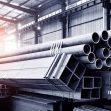Characteristics of a Well-Designed Curtain Wall
Efficient buildings are designed to provide occupants with a comfortable, safe, and healthy living and work environment. This requires superior architecture and engineering designs, quality construction practices, and intelligent operation of the structures. Nowadays, as modern curtain wall design has been widely used in a variety of applications, a well-designed curtain wall plays a significant role in the modern building construction. In general, there are a few distinctive characteristics of a well-designed curtain wall as below:

-Performance: This is the basic important function of a curtain wall system in applications, which can separate the interior of the building for the external conditions.
-Versatility: A well-designed curtain wall should be suitable for different conditions, buildings, and provide a variety of solutions to the different scenarios.
-Well-designed Accessories: A well-designed curtain wall should incorporate accessories such as brie solei or louvers in a seamless way, which means without compromising the performance of the system.
-Installation: The design of a curtain wall should always consider the installation, panels and brackets should also be designed to ease the installation process at the site.
The Advantages of a Well-Designed Curtain Wall Design
Glass curtain walls do more than encase a building in beautiful glass or other materials. They are also extremely beneficial in natural disaster zones and areas frequently affected by extreme weather conditions, such as high winds and pounding rain, and can allow for sustainability:
–Wind Force Management: A well-designed curtain wall can transfer lateral wind loads around a building: The wind travels along purposefully created channels connecting the building floors or columns, making it less likely that you will have to replace entire walls damaged during a natural disaster.
–Leak prevention: A well-designed curtain wall acts like a suit of armor that protects a building from heavy rains that can attack main structure vulnerabilities and create leaks.
–Sway Management: Through thoughtful placement of glass windows or other paneled materials and extruded aluminum frames, curtain walls can absorb sway during hurricanes and earthquakes, making them less likely to crack or crumble.
–Flexibility: Curtain walls allow for more design flexibility than concrete or stone load-bearing walls. For example, if you install a clear glass curtain wall on one side of a building to let in plenty of natural light, but later decide that the space is too bright, you can easily replace the glass panels with panels of tinted glass or an opaque material.
–Aesthetic Freedom: A well-designed curtain wall can add cohesiveness and beauty to a building. For example, aluminium curtain wall can create a structural braced-frame core and a series of exterior curtain walls for the modern commercial buildings today. At the entrance, floor-to-ceiling windows were implemented rather than punch-out windows, making the space feel more open and connected from one floor to the next.
–Sustainability: Most curtain walls are made from glass, allowing more natural light into a building, which reduces the need for artificial interior lighting and can improve thermal efficiency to reduce energy costs.
Tel: +86 18202256900 Email: steel@fwssteel.com









